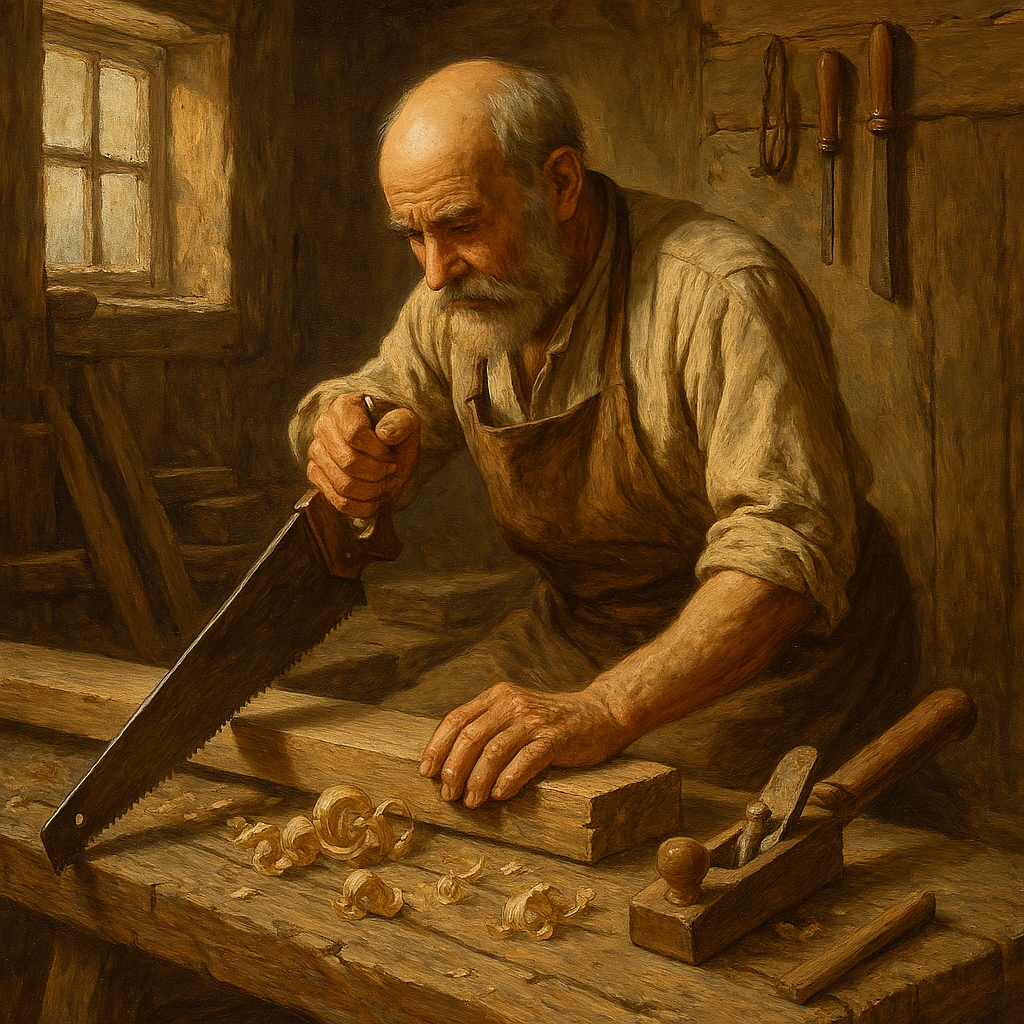Before the rise of modern power tools and mass production, carpentry was a meticulous craft performed entirely by hand. The old-fashioned carpenter was a master of patience, precision, and creativity, shaping wood into functional and artistic structures that have withstood the test of time.
The Tools of the Trade
Unlike today’s carpenters who rely on electric saws, drills, and sanders, traditional carpenters worked with simple yet effective hand tools:
Hand Saw – Used for cutting wood into desired shapes and sizes.
Chisels and Mallet – Essential for carving joints and intricate designs.
Hand Plane – Smoothed and leveled wood surfaces.
Wooden Pegs and Dowels – Held pieces together without the need for nails or screws.
String and Chalk Line – Ensured straight cuts and measurements.
Each tool required skill and experience to master, making every piece of woodwork a testament to craftsmanship.
The Art of Joinery
A key element of old-fashioned carpentry was joinery – the technique of connecting pieces of wood without nails. Some of the most common methods included:
Mortise and Tenon Joints – A durable connection where one piece fits into a carved slot in another.
Dovetail Joints – Used in furniture making, providing strength and aesthetic appeal.
Tongue and Groove – Common in flooring and paneling for a seamless fit.
These techniques ensured longevity, as many old wooden structures remain intact centuries later.
Crafting Without Machines
Every wooden object, from furniture to entire buildings, was shaped by hand. Carpenters took pride in:
Measuring and Cutting with Precision – A single mistake could waste valuable wood.
Hand-Carving Decorations – Many doors, pillars, and furniture pieces featured intricate patterns and motifs.
Using Natural Finishes – Instead of chemical varnishes, traditional carpenters used natural oils and waxes to enhance wood’s beauty and durability.
The Carpenter’s Role in Society
The old-fashioned carpenter was more than just a woodworker; he was an integral part of the community. He built homes, churches, barns, and even tools for other tradesmen. Each structure carried the mark of its maker, often with a personal touch in the form of unique carvings or hidden signatures.
A Legacy That Lives On
While modern technology has changed carpentry, the principles of old-fashioned craftsmanship continue to inspire. Today, many woodworkers still practice traditional techniques, keeping the spirit of handcrafted excellence alive. Restoring historic buildings, making bespoke furniture, and reviving lost joinery skills ensure that the legacy of the old-fashioned carpenter endures.
Final Thoughts
The old-fashioned carpenter was not just a tradesman but an artist, engineer, and historian, shaping wood and history simultaneously. Their dedication to precision and beauty remains a benchmark in woodworking, proving that true craftsmanship never goes out of style.
